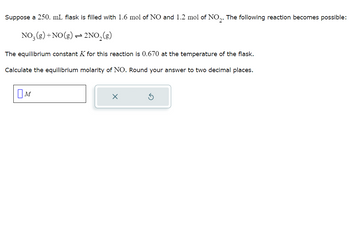Each row of the table below describes an aqueous solution at 25 °C. The second column of the table shows the initial components of the solution. • Use the checkboxes in the third column to explain the type of the initial solution. The fourth column describes a change in the solution. • Use the fifth column to predict how the change in the solution will change its pH. solution initial components (check all that apply) initial type acidic basic neutral acidic basic neutral A B с D H₂O H₂O. KOH H₂O H₂O, KOH O acidic basic neutral acidic basic neutral change add NaClO₂ add KCI add NaOH add HCl effect of change on pH (check one) O pH higher O pH lower O pH the same O pH higher O pH lower O pH the same O pH higher O pH lower O pH the same O pH higher pH lower pH the same
Each row of the table below describes an aqueous solution at 25 °C. The second column of the table shows the initial components of the solution. • Use the checkboxes in the third column to explain the type of the initial solution. The fourth column describes a change in the solution. • Use the fifth column to predict how the change in the solution will change its pH. solution initial components (check all that apply) initial type acidic basic neutral acidic basic neutral A B с D H₂O H₂O. KOH H₂O H₂O, KOH O acidic basic neutral acidic basic neutral change add NaClO₂ add KCI add NaOH add HCl effect of change on pH (check one) O pH higher O pH lower O pH the same O pH higher O pH lower O pH the same O pH higher O pH lower O pH the same O pH higher pH lower pH the same
Chemistry
10th Edition
ISBN:9781305957404
Author:Steven S. Zumdahl, Susan A. Zumdahl, Donald J. DeCoste
Publisher:Steven S. Zumdahl, Susan A. Zumdahl, Donald J. DeCoste
Chapter1: Chemical Foundations
Section: Chapter Questions
Problem 1RQ: Define and explain the differences between the following terms. a. law and theory b. theory and...
Related questions
Question

Transcribed Image Text:Each row of the table below describes an aqueous solution at 25 °C.
The second column of the table shows the initial components of the solution.
• Use the checkboxes in the third column to explain the type of the initial solution.
The fourth column describes a change in the solution.
• Use the fifth column to predict how the change in the solution will change its pH.
initial type
solution initial components (check all that apply)
O acidic
A
B
с
D
H₂O
H₂O, KOH
H₂O
H₂O, KOH
basic
neutral
acidic
basic
neutral
acidic
basic
neutral
acidic
basic
☐ neutral
00
change
add NaC104
add KC1
add NaOH
add HCl
effect of change on pH
(check one)
O pH higher
O pH lower
O pH the same
O pH higher
O pH lower
O pH the same
O pH higher
O pH lower
O pH the same
O pH higher
O pH lower
O pH the same
?
olo
Ar
Expert Solution
This question has been solved!
Explore an expertly crafted, step-by-step solution for a thorough understanding of key concepts.
Step by step
Solved in 5 steps

Follow-up Questions
Read through expert solutions to related follow-up questions below.
Follow-up Question

Transcribed Image Text:Suppose a 250. mL flask is filled with 1.6 mol of NO and 1.2 mol of NO₂. The following reaction becomes possible:
NO₂(g) + NO(g) → 2NO₂(g)
The equilibrium constant K for this reaction is 0.670 at the temperature of the flask.
Calculate the equilibrium molarity of NO. Round your answer to two decimal places.
OM
X
Solution
Knowledge Booster
Learn more about
Need a deep-dive on the concept behind this application? Look no further. Learn more about this topic, chemistry and related others by exploring similar questions and additional content below.Recommended textbooks for you

Chemistry
Chemistry
ISBN:
9781305957404
Author:
Steven S. Zumdahl, Susan A. Zumdahl, Donald J. DeCoste
Publisher:
Cengage Learning

Chemistry
Chemistry
ISBN:
9781259911156
Author:
Raymond Chang Dr., Jason Overby Professor
Publisher:
McGraw-Hill Education

Principles of Instrumental Analysis
Chemistry
ISBN:
9781305577213
Author:
Douglas A. Skoog, F. James Holler, Stanley R. Crouch
Publisher:
Cengage Learning

Chemistry
Chemistry
ISBN:
9781305957404
Author:
Steven S. Zumdahl, Susan A. Zumdahl, Donald J. DeCoste
Publisher:
Cengage Learning

Chemistry
Chemistry
ISBN:
9781259911156
Author:
Raymond Chang Dr., Jason Overby Professor
Publisher:
McGraw-Hill Education

Principles of Instrumental Analysis
Chemistry
ISBN:
9781305577213
Author:
Douglas A. Skoog, F. James Holler, Stanley R. Crouch
Publisher:
Cengage Learning

Organic Chemistry
Chemistry
ISBN:
9780078021558
Author:
Janice Gorzynski Smith Dr.
Publisher:
McGraw-Hill Education

Chemistry: Principles and Reactions
Chemistry
ISBN:
9781305079373
Author:
William L. Masterton, Cecile N. Hurley
Publisher:
Cengage Learning

Elementary Principles of Chemical Processes, Bind…
Chemistry
ISBN:
9781118431221
Author:
Richard M. Felder, Ronald W. Rousseau, Lisa G. Bullard
Publisher:
WILEY